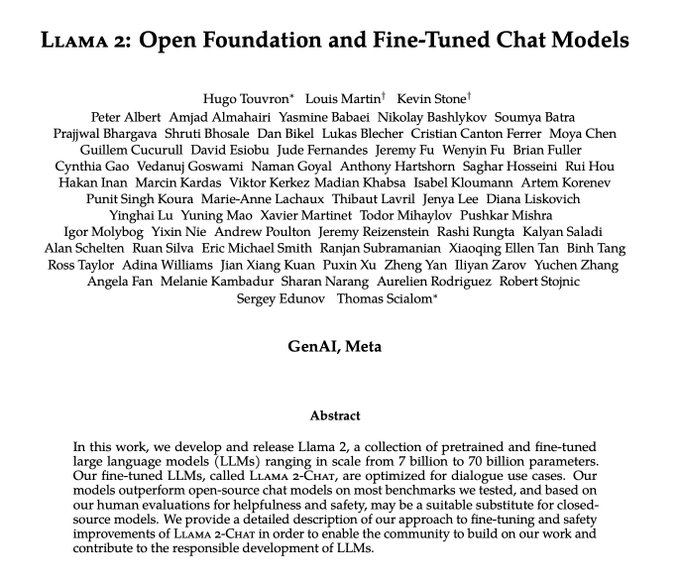
Samuel Müller
@SamuelMullr
Followers
1,088
Following
403
Media
27
Statuses
342
Deep Learning PhD Student focused on (Tab)PFNs supervised by @FrankRHutter . Ex-DeepL, Ex-Amazon. ETH BSc, Cambridge MPhil. Opinions are my own. (he/him)
Berlin
Joined February 2020
Don't wanna be here?
Send us removal request.
Explore trending content on Musk Viewer
Kendrick
• 294191 Tweets
Super Bowl
• 253672 Tweets
Defense
• 232734 Tweets
Ronaldo
• 184954 Tweets
Drake
• 167583 Tweets
Patriots
• 137258 Tweets
Giants
• 114541 Tweets
Steelers
• 105468 Tweets
Bears
• 104848 Tweets
Wayne
• 102484 Tweets
Bengals
• 78959 Tweets
Cowboys
• 76589 Tweets
Dolphins
• 66848 Tweets
Panthers
• 65937 Tweets
Browns
• 62319 Tweets
Falcons
• 55273 Tweets
Titans
• 51436 Tweets
JISOO AT NYFW WITH TOMMY
• 49476 Tweets
Colts
• 43358 Tweets
Texans
• 39916 Tweets
Raiders
• 34095 Tweets
Seahawks
• 31408 Tweets
Daniel Jones
• 30369 Tweets
Broncos
• 29925 Tweets
Chargers
• 28036 Tweets
#Sinner
• 25817 Tweets
Caleb Williams
• 25593 Tweets
Josh Allen
• 24380 Tweets
Baker
• 20979 Tweets
#深澤辰哉
• 19973 Tweets
Cleveland
• 19906 Tweets
#わたしの宝物
• 19617 Tweets
Bryce Young
• 19332 Tweets
#GHDBT1
• 18912 Tweets
Tom Brady
• 18733 Tweets
Forbes
• 17502 Tweets
TJ Watt
• 16464 Tweets
Deshaun Watson
• 12923 Tweets
Kirk Cousins
• 11313 Tweets
Zeke
• 11277 Tweets
Aubrey
• 10915 Tweets
Will Levis
• 10439 Tweets
Last Seen Profiles
@EvMill
This trick is not new, it is even part of the standard torch implementation of multi head attention. The option is called, add_zero_attention. They add a zero to the logits, resulting in a one in the denominator, as e^0=1.
5
11
151
@graduatedescent
what would be your take on this? Why do you think we saw such different outcomes?
1
1
48
Yeah 🎉 Best paper award for TabPFN ☺️
We congratulate
@noahholl
@SamuelMullr
@KEggensperger
@frankhutter1
for receiving the best-paper award and
@dja_vos
@tdoehmen
@sscdotopen
for the best-paper runner-up award. Check out their great work! Best-paper: . Runner-up: . 4/6
1
3
12
2
1
31
@danijarh
@FrankRHutter
[Author here] We actually tried this and, to our surprisal, we found that the TabPFN does generalize to longer sequences than it was trained on. Figure 9 in the Appendix (…)
2
0
32
@LaurenceBrem
I think this is not very special tbh and standard MLPs can do it, too, in many instances. For this you might want to checkout the work on MLP-Mixers :)
0
1
27
I am very proud of our achievements in this paper towards learning an algorithm that solve real-world tabular classification problems. This might be the first step towards a new category of (bayesian) classification algorithms, that are super fast and accurate. 🚀
3
3
27
The TrivialAugment Oral for the ICCV is online!! 🎉 Yes, of course I sing my presentation to the tune of "Hey Jude" 😉😂 Join us in session 1, you can also watch the entire talk on . Joint work with
@FrankRHutter
: .
2
6
22
@JulienMouchnino
@FrankRHutter
Both together. The TabPFN is a neural network that accepts a training set of (x,y) pairs and a set of test inputs x and predicts the y for all test inputs at once. The whole process (training + testing) is a single forward-pass.
3
0
19
What about changing neural networks to make hyper-parameters easy to tune instead of finding good tuning methods? That is what
@TheGregYang
et al propose in their new paper . Let's dive into it and try it out. 1/n
2
1
16
Looking forward to AutoML Fall School, I will give a tutorial on the next generation of AutoML and its connection to in-context learning. We will train our own little (Tab)PFN :)
🚨 Only 1 week left to secure your spot at the
#AutoMLFallSchool
in Munich! Don't miss on 6 keynotes, 7 hands-on tutorials and a poster session, all on
#AutoML
📚💡 Register now at for one of the few remaining tickets.
2
6
12
0
3
13
If you’re in Kigali, check out
@noahholl
’s presentation on TabPFN in the Auditorium at 10:20 or come to our poster in MH1-2-3-4 at 11:30
0
2
9
Very proud to be part of this cool work. We could use GPT-4 to automatically do feature engineering for us. This improved scores a lot (> 2% on average) and led to very reasonable extra features. 🎉
We have open sourced everything, few free to try it out for your data :)
3
1
10
@predict_addict
@FrankRHutter
[Author here] We only tested calibration for smaller models, thus I am not sure for the final model. In our previous paper (…), we found good calibration for PFNs trained on a similar prior in Table 1.
1
0
9
@WvanAmsterdam
@FrankRHutter
[Author here] We only tested calibration for smaller models, thus I am not sure for the final model. In our previous paper (), we found good calibration for PFNs trained on a similar prior in Table 1.
1
0
7
@m_elantkowski
@FrankRHutter
@noahholl
@KEggensperger
[Author here]
1. The prior that generates the synthetic datasets is chosen very broad. Additionally, we take care to normalize data before feeding it to the TabPFN for prediction. Thus, we believe most real-world datasets are in-distribution.
2. Yes! We are on it ;)
2
0
6
If this thread caught your interest and you wonder “How do I train these models!?”, check out our paper at . This is joint work and I want to thank the great team consisting of
@noahholl
, Sebastian, Josif and
@FrankRHutter
. (7/n)
0
1
7
@ArnaudovKrum
@FrankRHutter
[Author here] There are a few reasons we focused on small datasets first. The biggest are: i) Training is cheaper on small datasets (we train on around 500M artificial datasets) ii) GPU memory is limited and transformers scale quadratically with the number of inputs.
3
0
7
@tobias_sterbak
@FrankRHutter
[Author here] There are a few reasons we focused on small datasets first. The biggest are: i) Training is cheaper on small datasets ii) GPU memory is limited and transformers scale quadratically with the number of inputs.
Both are limitations we are working on. 😊
0
0
6
@pradanadimass
@FrankRHutter
[Author here] Transformers do not require a lot of memory at inference time, as nothing has to be saved for backprop. We did not try it, but I expect about a GB of memory is enough to make predictions using the TabPFN.
0
0
6
@hgoldstein95
@swati1729
Totally, but the original tweet is horrible advice for young people without contacts. She also pushes the expectation of the phd (publish paper, visit conference) before the PhD, which is toxic bullshit.
2
0
6
@hbouammar
I don’t think this is true. A inner-product (the simplest neural network) cannot be represented by a finite decision tree. One would need to map any input to a different leave. No?
1
0
6
Exiting! Seems to be comparable to ChatGPT for non-coding tasks but is available for download with permissive license 🏋️
1
2
6
@michalwols
@giffmana
@karpathy
@PreetumNakkiran
@francoisfleuret
This is actually something I ran into with Jax also, just never with PyTorch.
1
0
5
Kigali was clean, safe, fun and had good weather. What a great place to have a conference at. 🌴🛵🐆 Thank you
@iclr_conf
for showing us Rwanda.
0
0
5
@abacaj
I think this might not be true, a shameless plug for my colab notebook for you to try out yourself :)
0
1
5
Great 🙏 that’s enough for this year! I can stop working on my neurips submission then.. 😅
1
0
5
@DimitrisPapail
I think they can actually learn algorithms. Check out the TabPFN paper, we train a transformer to learn to do tabular prediction on unseen datasets, the model is only trained on artificial data.
1
0
5
@ChristophMolnar
[Author here] Yes it is different from traditional fit and predict. The setup is more similar to meta-learning, but on artificial data. This has the side-effect that we are approximating a Bayesian solution, actually.
0
0
4
RLHF inspired training for vision. First train a standard model with CE. Then fine tune with RL on the non-differentiable metric you actually care about.
0
0
4
@pradanadimass
@JulienMouchnino
@FrankRHutter
The method can be seen as similar to in-context learning with LLMs like GPT-3.
1
0
4
@hbouammar
In current computers this of course can be seen as true, as our floats are discrete. I don’t think this is meant though.
1
0
4
@karpathy
This will be a viable direction. Randomised simulations can implicitly generate a prior. We can show that meta-learning on such data yields a posterior approximation for this prior, see
So it is all still Bayesian! (shameless plug end)
0
0
4
@SuryaGanguli
@AllanRaventos
@mansiege
@FCHEN_AI
Looking forward to reading the paper and understanding exactly what you mean by becoming better than bayes-optimal with task diversity. Sounds great!
I think we actually demonstrated ICL out-of-dist performance in the real-world on tabular tasks with .
1
0
3
@BlackHC
@zacharylipton
Haha they are but I think this is actually one where the Bayesians are right and the connection is not very far fetched:
0
0
3
@ArashVahdat
Reviewers actually can't answer your emails, as they are delivered from a no reply email. :(
0
0
3
@graduatedescent
Re Sine frequencies: I only trained on one, but makes it even harder arguably!? But yeah, I overlooked that..
Re Architecture: Yeah, right! I did not use pos embs. I wonder whether they actually destroy it all. I guess for length generalization it is well known they are bad. 🤔
0
0
2
@rasbt
@FrankRHutter
1. We use datasets up to 2K examples, as we use a 50/50 train/val split.
2. Categoricals are simply treated as scalars (with integer values). A training example is treated as a single vector, in this case of size 5, which is encoded with a simple linear.
0
0
3
@vlastelicap
@_arohan_
@giffmana
Not significant. The usual rule of thumb I know is >= 1 BLEU is considered significant.
0
0
3
Unlike prev. methods we only apply a single augmentation, but we use varying strengths. See paper or blog for more. We even open-sourced it as a mini-library: . A big thank you to my supervisor,
@FrankRHutter
, for the collaboration on this project. (4/4)
1
0
3
Thank you
@__mfeurer__
,
@noahholl
, and
@FrankRHutter
for being amazing colleagues and co-authors!
If you this caught your interest and you have questions, please feel free to reach out. (6/6)
0
1
3
@giffmana
@cgarciae88
@predict_addict
@kaggle
@tunguz
Mmh I do not know any work that does that for tabular
0
0
3
What if we had a version with down-sampled images for each paper on arxiv? Download times recently exploded for me for vision papers. This would surely improve accessibility and could probably be done automatically by
@arxiv
.
0
0
3
@mkhoury
@will_lawrenceTO
@Austen
I agree, but that is clearly a mistake of YouTube. I use like 10 apps on my Apple TV and YouTube is the only one I struggle with.
0
0
3
@martin_casado
I think this might not be true... shameless plug...
1
0
2
@chiefluddite
This might actually not pan out, I tried it out and could generalize...
0
0
2
@skoularidou
I see! In my feed your post was stuffed between ML posts, so I had the wrong context, I guess. 😅
0
0
2
@fchollet
Isn’t torch just clearly the best? Can’t Google allow its employees also switch to it as it is real OSS now? I don’t think the exceptionalism of Google helps research, as it reduces reproducibility a lot.
A step in the right direction is Keras support for torch as backend i think
2
0
2
@GaryMarcus
For me it just generalized out of the box, you can try it yourself. Everything is public
0
0
1
@graduatedescent
Re overlap: Agreed. That is my main finding, too. Just make sure to add some noise and all distributions overlap. I have to say, though, that even if I made sure there was no overlap (second experiment) that I saw some generalization. This is weird to me too though...
2
0
1
I did not expect that there could be further improvements in flash attention of this magnitude!
Looking forward to try this on our old RTX 2080 TIs, let’s pray it works there, too 🙏🙏🙏
0
0
2































































